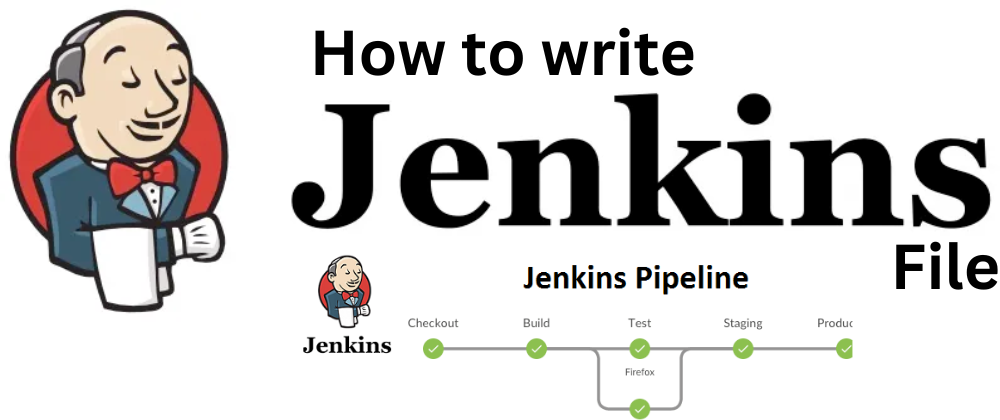A Jenkinsfile is a text file that defines the entire build process for a Jenkins pipeline. It uses a domain-specific language (DSL) that is based on Groovy syntax. Writing a Jenkinsfile involves defining stages, steps, and other configuration elements to automate the build, test, and deployment processes. Here's a basic guide on how to write a Jenkinsfile:
Create a Jenkinsfile: Start by creating a Jenkinsfile in your project's repository root or in a specified directory. You can name it Jenkinsfile without any file extension.
Specify Pipeline Configuration: Begin the Jenkinsfile by defining the pipeline configuration. There are two syntax options: Declarative and Scripted.
- Declarative Syntax: This is a more structured and human-readable approach. Use the pipeline block to define your pipeline:
pipeline {
agent {
// Specify the agent (where the build runs)
// e.g., 'docker', 'node', 'label', 'any', etc.
}
stages {
// Define your build stages here
stage('Build') {
steps {
// Define steps for the 'Build' stage
}
}
stage('Test') {
steps {
// Define steps for the 'Test' stage
}
}
// Add more stages as needed
}
post {
// Define post-build actions, such as notifications or cleanup
}
}
- Scripted Syntax: This offers more flexibility but may be less readable for complex pipelines. Use the node block to define your pipeline:
node {
// Define your pipeline steps here
}
Define Stages and Steps: Inside the 'stages' block, define the individual stages of your build pipeline. Each stage contains one or more steps. Steps can be shell commands, scripts, or predefined Jenkins plugins.
stages {
stage('Build') {
steps {
// Execute build commands here
}
}
stage('Test') {
steps {
// Execute test commands here
}
}
// Add more stages and steps as needed
}
Configure Agents: In the 'agent' block (Declarative syntax) or using 'node' (Scripted syntax), specify where the build should run. You can use a specific node or container image.
Define Post-Build Actions: In the 'post' block, you can define post-build actions, such as sending notifications, archiving artifacts, or triggering other Jenkins jobs based on the build result.
Save and Commit: Save the Jenkinsfile and commit it to your version control system (e.g., Git). Jenkins will automatically detect and execute the pipeline when changes are pushed to the repository.
Configure Jenkins Job: In your Jenkins server, create a new pipeline job, specify the location of the Jenkinsfile in your repository, and configure any required parameters or triggers.
Run the Pipeline: Trigger the pipeline either manually or based on your configured triggers (e.g., code changes, schedules).
Monitor and Debug: Use the Jenkins web interface to monitor pipeline execution, view logs, and debug any issues that may arise.







Top comments (1)
[[..Pingback..]]
This article was curated as a part of #107th Issue of Software Testing Notes Newsletter.
Web: softwaretestingnotes.com